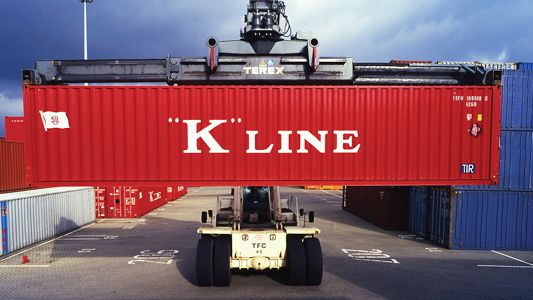
Japanese shipping company, K Line delivered a net profit of JPY 10.4 billion for the fiscal year ended March 31, 2018, compared to a net loss of JPY 139.4 billion seen a year earlier.
However, another Japanese line, Mitsui O.S.K Lines (MOL) has reported a full-year loss for the fiscal year ended March 31, 2018, of USD 446 million (JPY 47.3 billion).
The red ink is being attributed to the establishment of a joint venture container shipping company Ocean Network Express (ONE) with compatriot lines NYK and K Line.
Specifically, MOL said that it had incurred losses due to the charter-out of vessels to ONE, losses on liquidation of the company’s agencies, and others. Therefore, the company has recorded a loss as“loss related to business restructuring.”
Out of Japan’s Big Three shipping firms, MOL was the only to end the previous fiscal year with a net income, despite a decrease in its revenues.
Namely, the shipping firm’s net income stood at JPY 5.2 billion, bouncing back from a net loss of JPY 170.4 billion seen in the previous year.
For the fiscal year ended March 31, 2018, the company’s revenues were higher standing at JPY 1.65 trillion against last year’s JPY 1.5 trillion. MOL booked an operating profit of JPY 22.6 billion, also up from last year’s JPY 2.55 billion.
Nevertheless, MOL is optimistic about returning to the black, as it forecasts profit of USD 285 million for the FY ending March 31, 2019.
K Line’s operating revenues for the period were at JPY 1.16 trillion, up from JPY 1.03 trillion reported a year earlier.
In the shipping industry, cargo movements in the East-West services remained firm throughout the year in the containership business and freight rated remained on a recovery track, “but the supply-demand balance did not improve in earnest,” according to K Line.
In the dry bulk business, market rates in the Capesize sector continued to recover from the historic low due to robust cargo movements of iron ore and coking coal bound for China. Market rates in the medium and small vessel sector also continued to recover moderately due to robust cargo movements especially of grain and coal.
In addition to the structural reforms carried out in the previous two fiscal years in order to enhance competitiveness, the group implemented measures to improve its profitability, including continued cost reduction and improvement of vessel allocation efficiency.
Despite negative effects of a rise in fuel oil prices, business performance improved, recording in the first annual profit in all stages of operating profit, ordinary profit and profit attributable to owners of the parent in two years.
The company’s containership sector delivered a profit of JPY 3.4 billion, compared to a loss of JPY 31.5 billion reported in the previous fiscal year, while the bulk shipping sector ended the year with a profit of JPY 3.2 billion, against a loss of JPY 9.5 billion seen a year earlier.
For the fiscal year ending March 31, 2019, the company is projecting operating revenues of JPY 754.5 billion and a profit of JPY 7 billion.